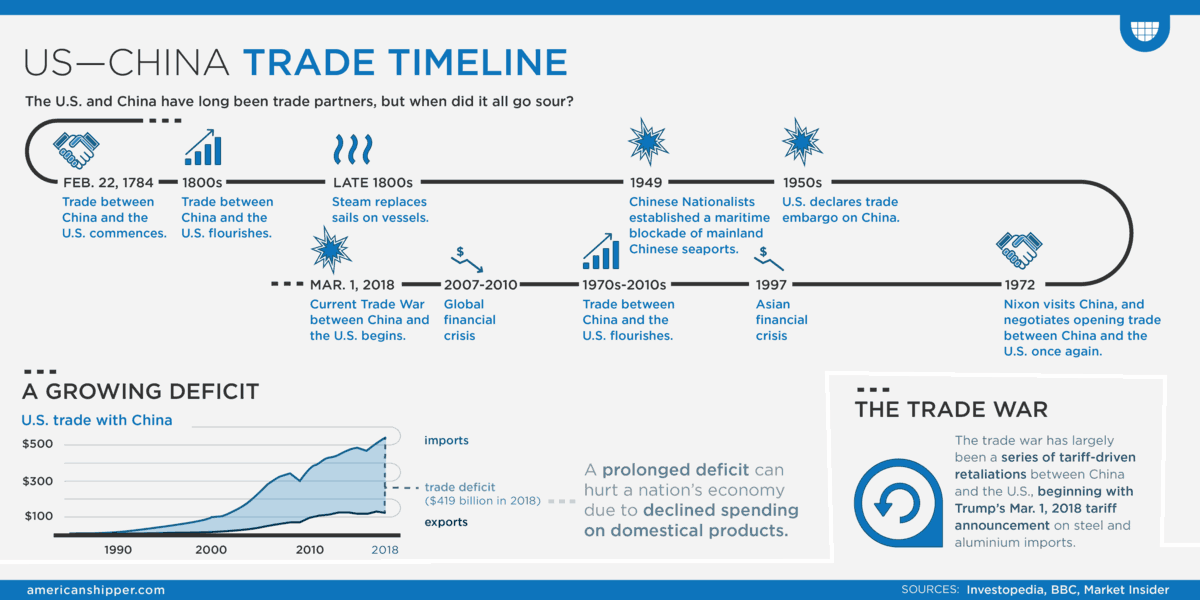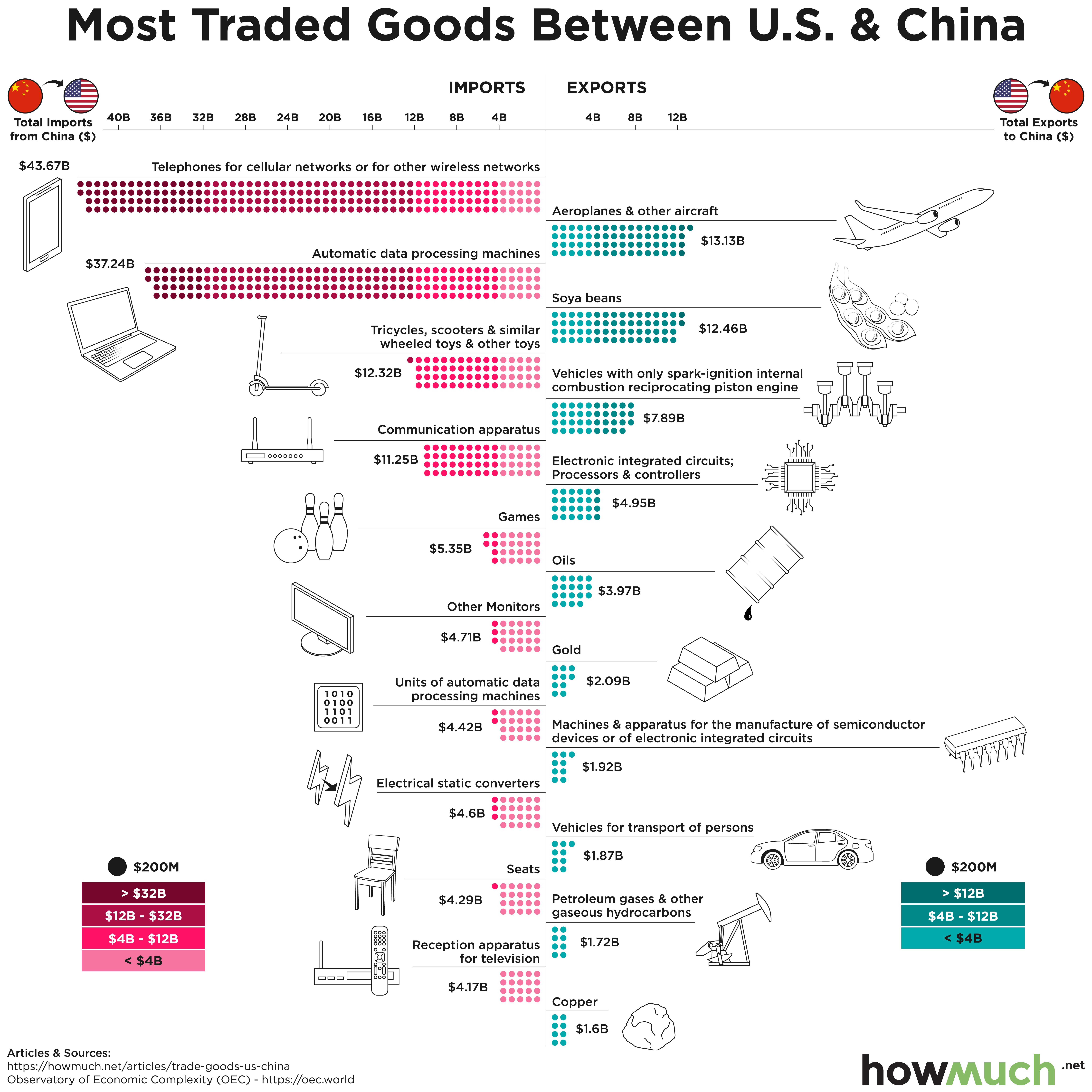The US-China Trade War: Who Conceded First?

Table of Contents
Early Stages of the US-China Trade War
The US-China trade war ignited under the Trump administration with the imposition of tariffs on various Chinese goods. These initial tariffs, announced in early 2018, targeted sectors crucial to China's economy, aiming to address concerns about intellectual property theft, forced technology transfer, and trade imbalances. China swiftly retaliated with its own tariffs on US products, initiating a cycle of escalating trade tensions.
- Timeline of initial tariff increases: The first rounds of tariffs were implemented in stages throughout 2018, with subsequent increases and retaliatory measures continuing into 2019.
- Key sectors affected by the tariffs: Agriculture (soybeans, pork), technology (electronics, telecommunications equipment), and manufactured goods were heavily impacted on both sides.
- Economic impact on both countries during the early stages: Both the US and China experienced economic disruptions. US farmers faced significant losses due to reduced exports to China, while Chinese manufacturers and consumers faced higher prices on imported goods. The early US-China trade war significantly impacted global market confidence.
Escalation and Negotiation Attempts
The initial tariffs triggered a tit-for-tat escalation, with both sides repeatedly increasing tariffs on each other's goods. This period was characterized by intense diplomatic efforts and numerous negotiation attempts between high-ranking officials. Despite several rounds of talks, reaching a comprehensive agreement proved challenging.
- Key players involved in negotiations: Robert Lighthizer (US Trade Representative) and Liu He (Chinese Vice Premier) were prominent figures in these negotiations.
- Breakdown of negotiation rounds and their outcomes: While several meetings yielded minor agreements, significant breakthroughs remained elusive until the "Phase One" deal.
- Economic consequences of the escalating trade war: The escalating US-China trade war created uncertainty in global markets, disrupted supply chains, and negatively affected global economic growth. The uncertainty surrounding tariff increases hindered investment and trade.
The "Phase One" Deal and Subsequent Developments
The "Phase One" trade deal, signed in January 2020, marked a temporary de-escalation of the US-China trade war. This agreement saw China commit to purchasing a significant amount of US goods and services over two years. However, whether it constituted a clear concession by either side remains debatable.
- Key aspects of the Phase One agreement: China pledged to increase purchases of US agricultural products, energy, and manufactured goods, aiming to reduce the US trade deficit with China.
- Analysis of whether the agreement constituted a concession by either side: While China committed to increased purchases, the US also made some concessions by scaling back planned tariff increases. The "Phase One" deal was more of a truce than a complete resolution of trade disputes.
- Impact of the Phase One deal on global markets: The deal provided some relief to global markets, but uncertainty remained, as many issues were left unresolved.
Post-"Phase One" Dynamics and the Biden Administration
Despite the "Phase One" deal, trade tensions between the US and China persisted. The Biden administration inherited this complex relationship and adopted a nuanced approach, focusing on addressing specific trade concerns rather than engaging in a large-scale tariff war.
- Comparison of Trump and Biden administration trade policies: The Biden administration's approach is characterized by multilateralism and a focus on addressing systemic issues rather than solely relying on tariffs.
- Ongoing challenges and areas of contention: Issues such as intellectual property rights, technology transfer, and market access remain key areas of friction.
- Future outlook of the US-China trade relationship: The US-China trade relationship continues to be complex and dynamic. Future developments will depend on the evolving geopolitical landscape and the willingness of both sides to find common ground.
Conclusion
The US-China trade war was a protracted and multifaceted conflict, where defining clear concessions proved challenging. While the "Phase One" deal provided a temporary reprieve, neither side made a complete capitulation. The initial imposition of tariffs by the US arguably initiated the conflict, but China’s retaliatory measures significantly escalated the tensions. The ongoing complexities highlight the intricate interplay between economics and geopolitics. Understanding the nuances of the US-China trade war is crucial for navigating the complexities of global economics. Continue your research into the ongoing US-China trade relations and stay informed on the latest developments regarding this impactful economic conflict.

Featured Posts
-
 Predicting The San Jose Earthquakes Quakes Epicenter Preview And Analysis
May 15, 2025
Predicting The San Jose Earthquakes Quakes Epicenter Preview And Analysis
May 15, 2025 -
 Nhl Officials And Their Apple Watches Impact And Implications
May 15, 2025
Nhl Officials And Their Apple Watches Impact And Implications
May 15, 2025 -
 Breaking The Trade Standoff Examining The Us And Chinas Concessions
May 15, 2025
Breaking The Trade Standoff Examining The Us And Chinas Concessions
May 15, 2025 -
 Almeria Eldense En Directo Sigue El Partido De La Liga Hyper Motion
May 15, 2025
Almeria Eldense En Directo Sigue El Partido De La Liga Hyper Motion
May 15, 2025 -
 Analisis Del Partido Belgica 0 1 Portugal Resumen Y Goles
May 15, 2025
Analisis Del Partido Belgica 0 1 Portugal Resumen Y Goles
May 15, 2025
